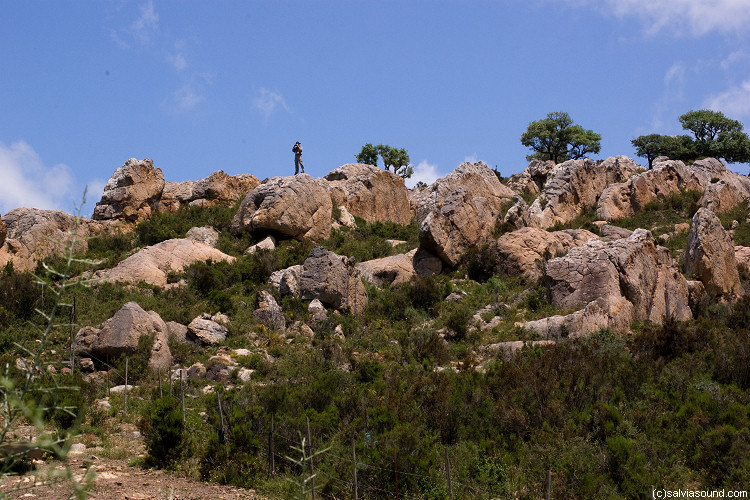
Outside:
I had two days to spend looking for carnivorous plants, and the first day was dedicated to just one site--a supposed
Drosophyllum population just outside of Algeciras, in the Parque Natural de los Alcornocales.
This region of Spain is spectacular. The land is rugged, with a mosaic of soil types
derived from limestone, sandstone, and granite. The diversity of soils, exposures, and resulting microclimates is matched by
the fabulous variety of wildflowers. Walking among them, it was like touring a never-ending xerophytic demonstration
garden.
Driving to this site from the south, I encountered a gated and locked road closure a few km from the site. This was frustrating and
unnerving. Fortunately, using my maps I circled around and dropped to the site from the north, avoiding the closure.
Parking the car, the three of us fanned out on
the rocky slope to see what we could see. My site source said the plants would be easy to find.
Unfortunately, I had made a critical error when I left the road--I headed up the wrong hillside. For two or three hours we scoured the
hillside, at various elevations from the base to the top, looking for plants.
For all my efforts, I found only two or three scraggly Drosophyllum plants. A pleasure to see, but not
quite what I was hoping for.
By the time that Beth took the photograph of me, above, I had taken to finding the highest point I could to assess the
surrounding countryside, to look for likely nearby habitat.
This view shows what I was seeing. Knowing that
Drosophyllum seemed to be a poor competitor, I looked for areas of the sort you see on the background-left
hillside in that photograph. Do you see the exposed lines of rock? I hoped that kind of strata might be weathered sandstone, which
produced the soils I was looking for.
That photograph also shows a pretty amazing rock formation, doesn't it? It is called La Montera del Torero, which refers to the
little black hats
that matadors wear.